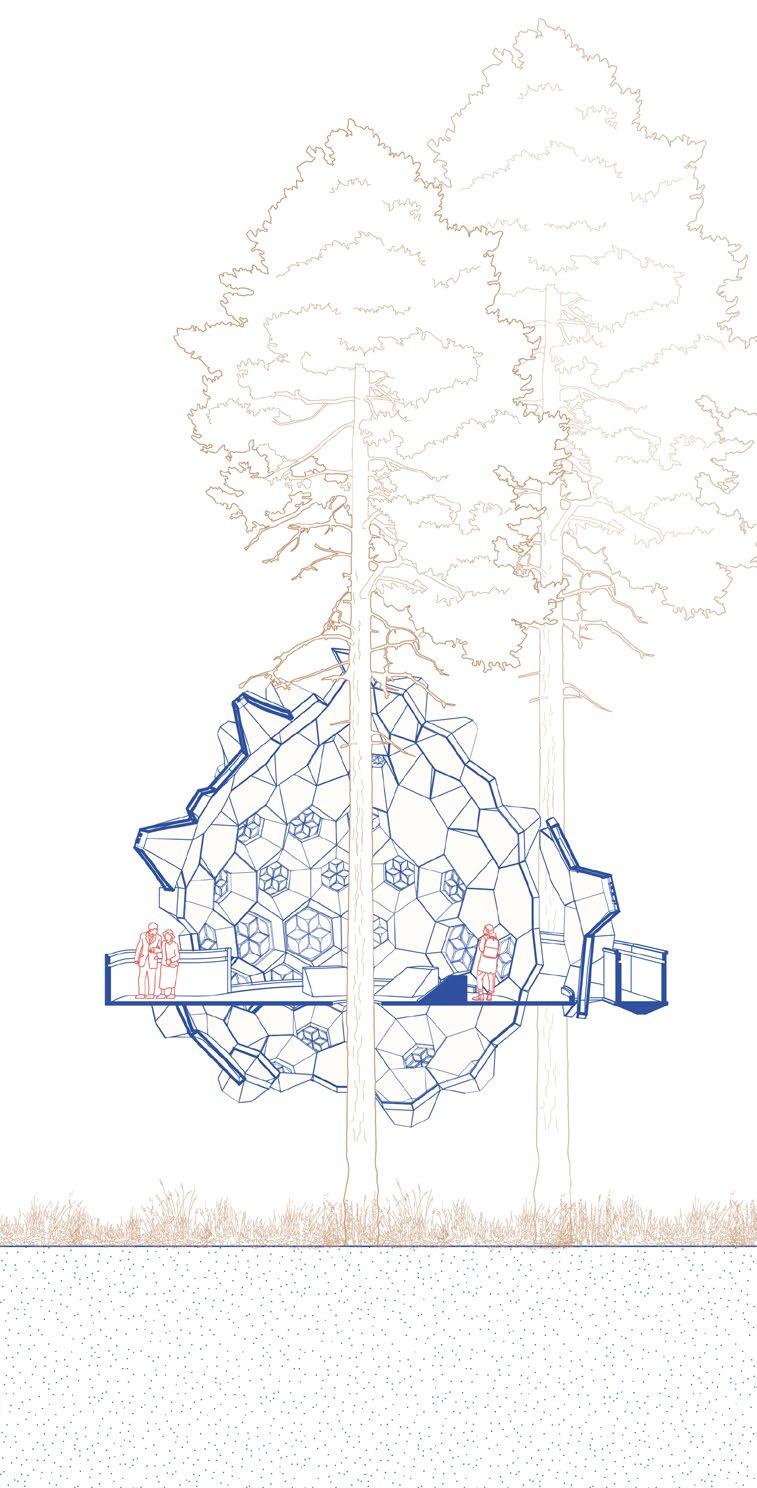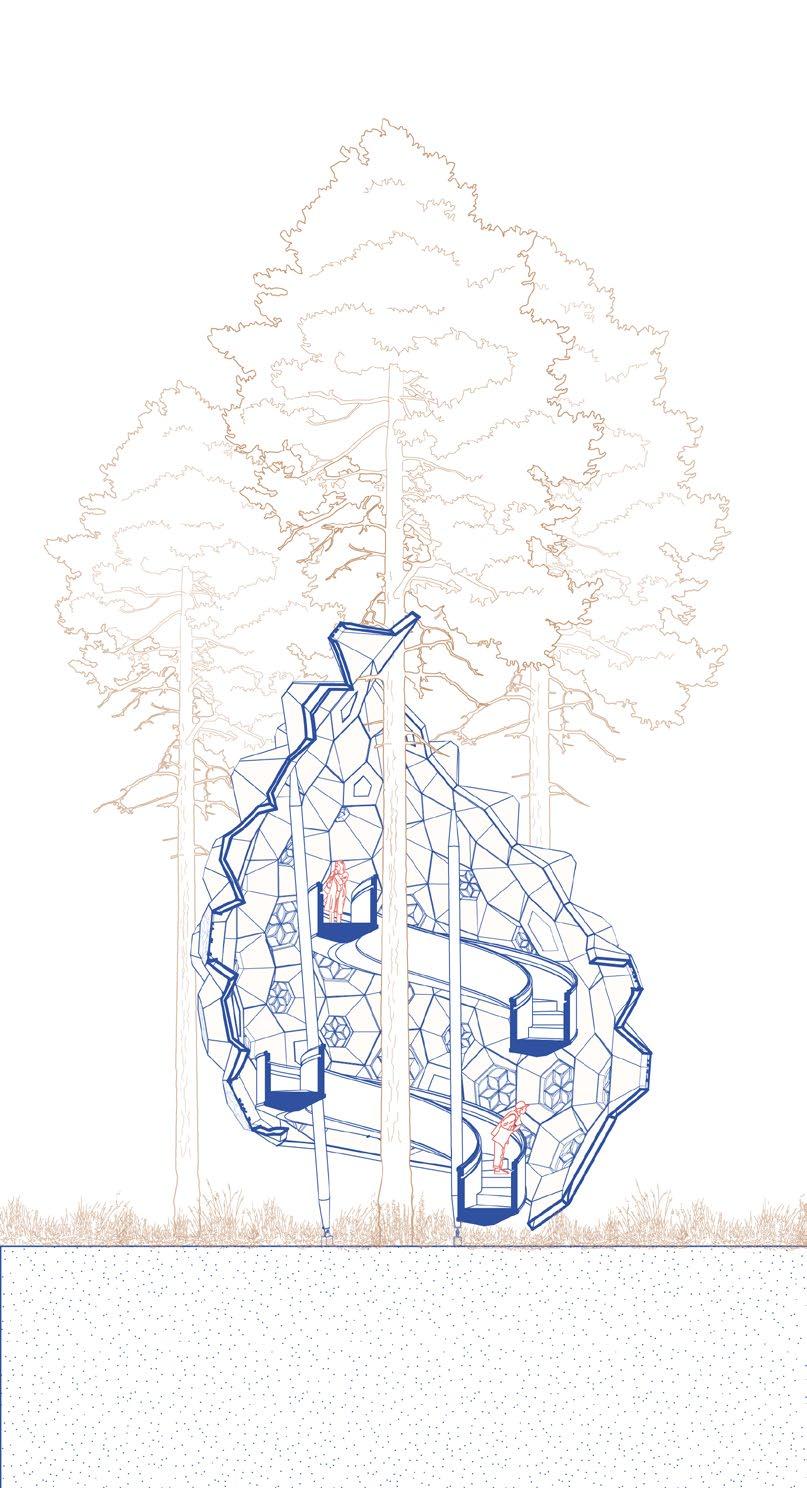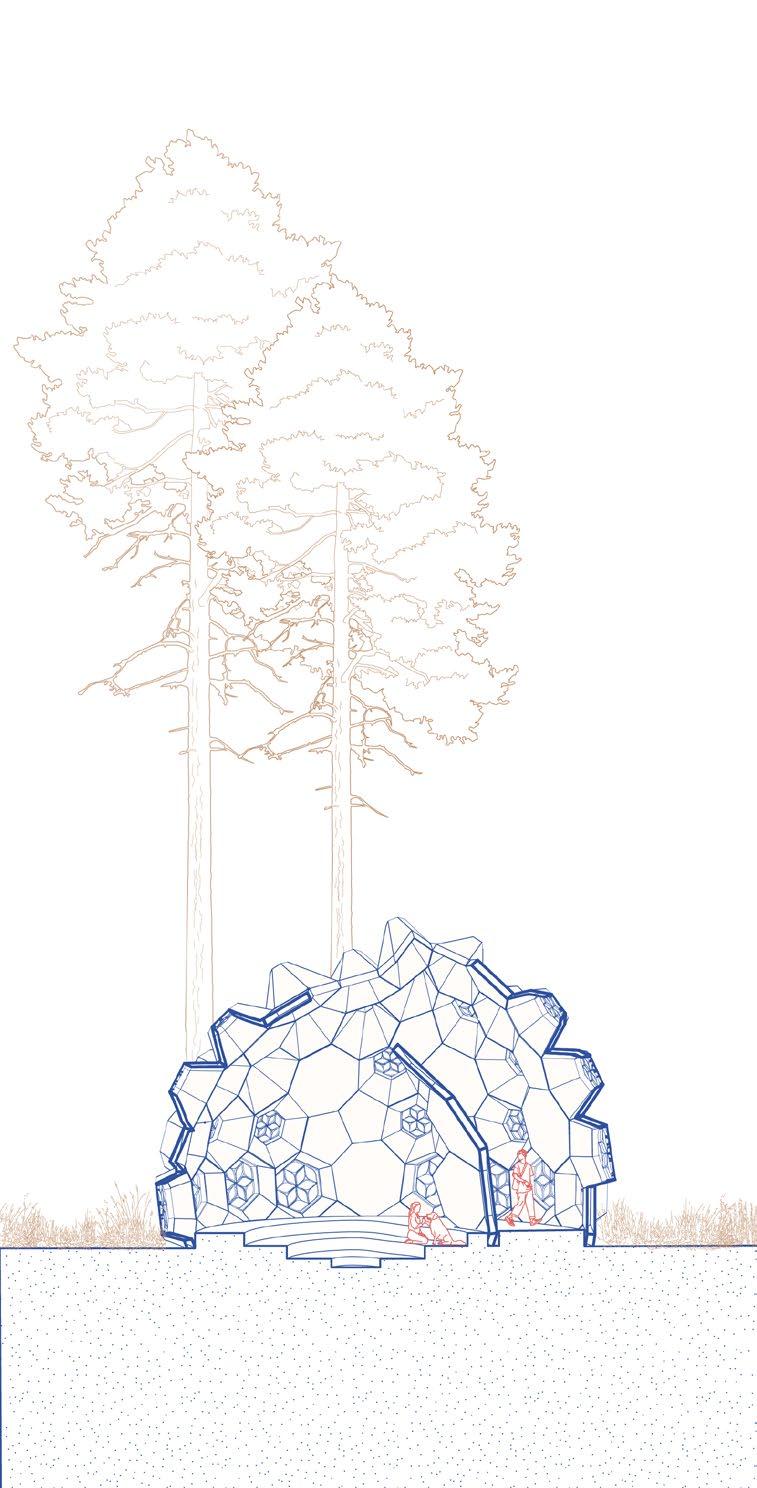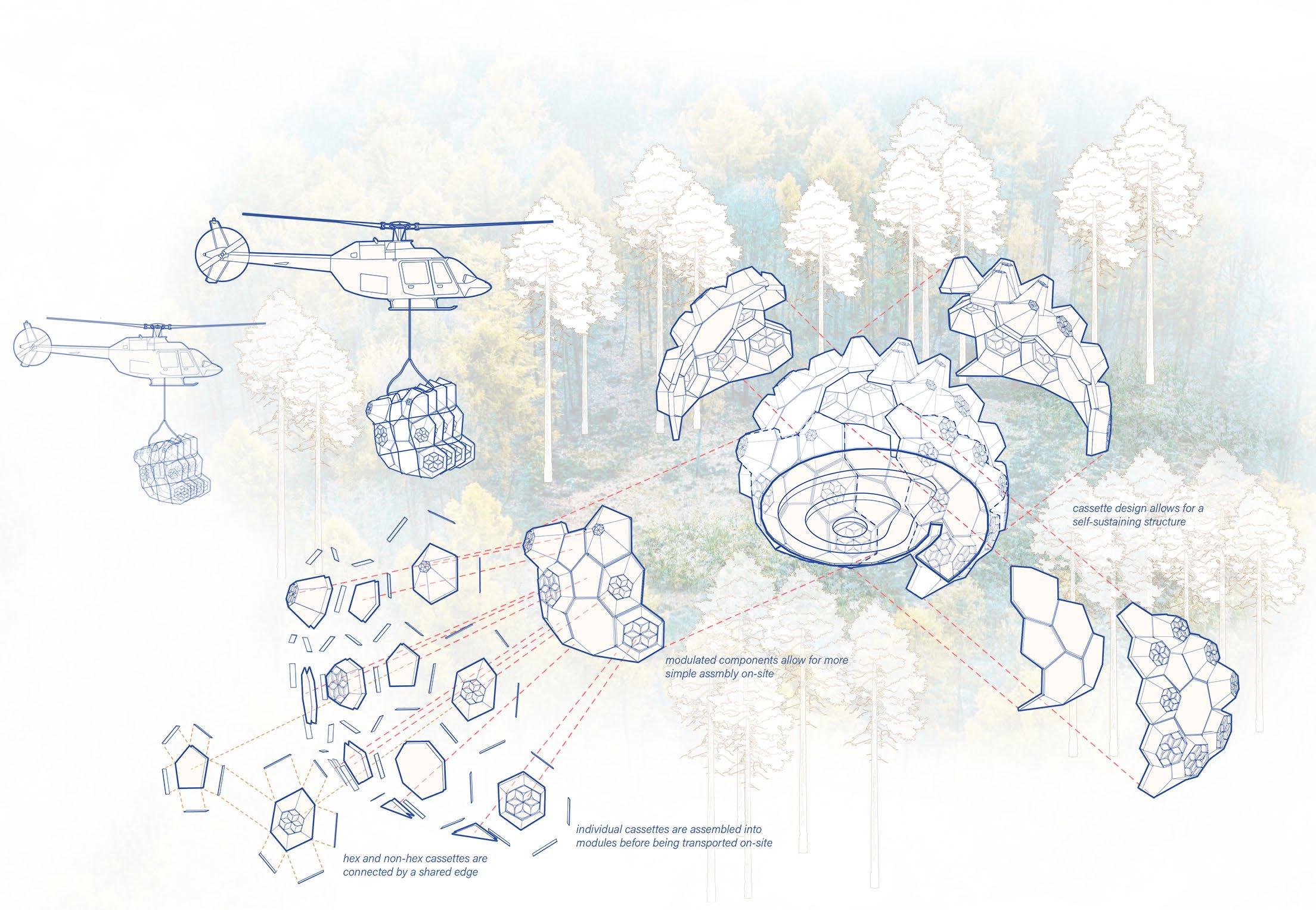
3 minute read
VARIANCE
How can we improve upon passive adaptive strategies in architecture to optimize user experience and limit energy expenditure in building systems?
Project Type: Biomimetic Architecture, Research Pavilions
Advertisement
Completed: Fall 2021, 3rd Year Design Studio
Location: Shaga Forest, Japan
Programs: Rhino 6, Grasshopper, 3DS MAX, Adobe Suite
Supervised by: David Correa, david.correa@uwaterloo.ca IncollaborationwithLyricBarnikandGlennLu
CASA 2022 Student Showcase Top Project
Dezeen University of Waterloo Spotlight Project
OAA Sustainability Prize
Norm Li Visualization Award
3B Studio Outstanding Design Award
Pella Sustainability Design Award
UWSA Project Exhibition Showcase bistable mechanism hygroscopic amplification snapping mechanism hygroscopic counterweight
Variance is a pathway of nodes placed in the ever-changing character of the Shaga Forest, creating an apparatus for viewing the forest in a new set of perspectives through both elevation and aperture. These nodes play in and out and in between a vertical grid of cedar trees, transporting the user from a preexisting path to one that minimally invades the natural setting.
The aperture forms truncated passive lighting mechanisms, derived from the biomimetic principles stemming from our research into the nastic movement of the Maranta leuconeura, the Oxalis triangularis, and the Mimosa pudica. Their activation combines principles of elastic instability, or “snap-buckling”, and hygroscopic movement, which allows for an acceleration of the hygroscopic movement itself. The presented mechanisms make it possible to significantly increase the speed of response of the hygroscopically driven mechanism while maintaining the ability to operate over several reversible cycles.
The formulation of cassettes allows for the extension of the hygroscopic snap mechanisms to be self-sustaining structures - not only acting as an addition to a facade, but act as modular building blocks that create an atmospheric space as it passively responds to the humidity and fluctuations of their environments and microclimates. As recent trends in architecture open the possibility to move away from the electromechanical and towards the use of smarter materials, these material-driven intrinsic actuators offer a more durable and sustainable solution to failure prone electronic sensors controllers and actuators.
Analysis: What plant structure and movement strategies can we observe and adapt from nature?

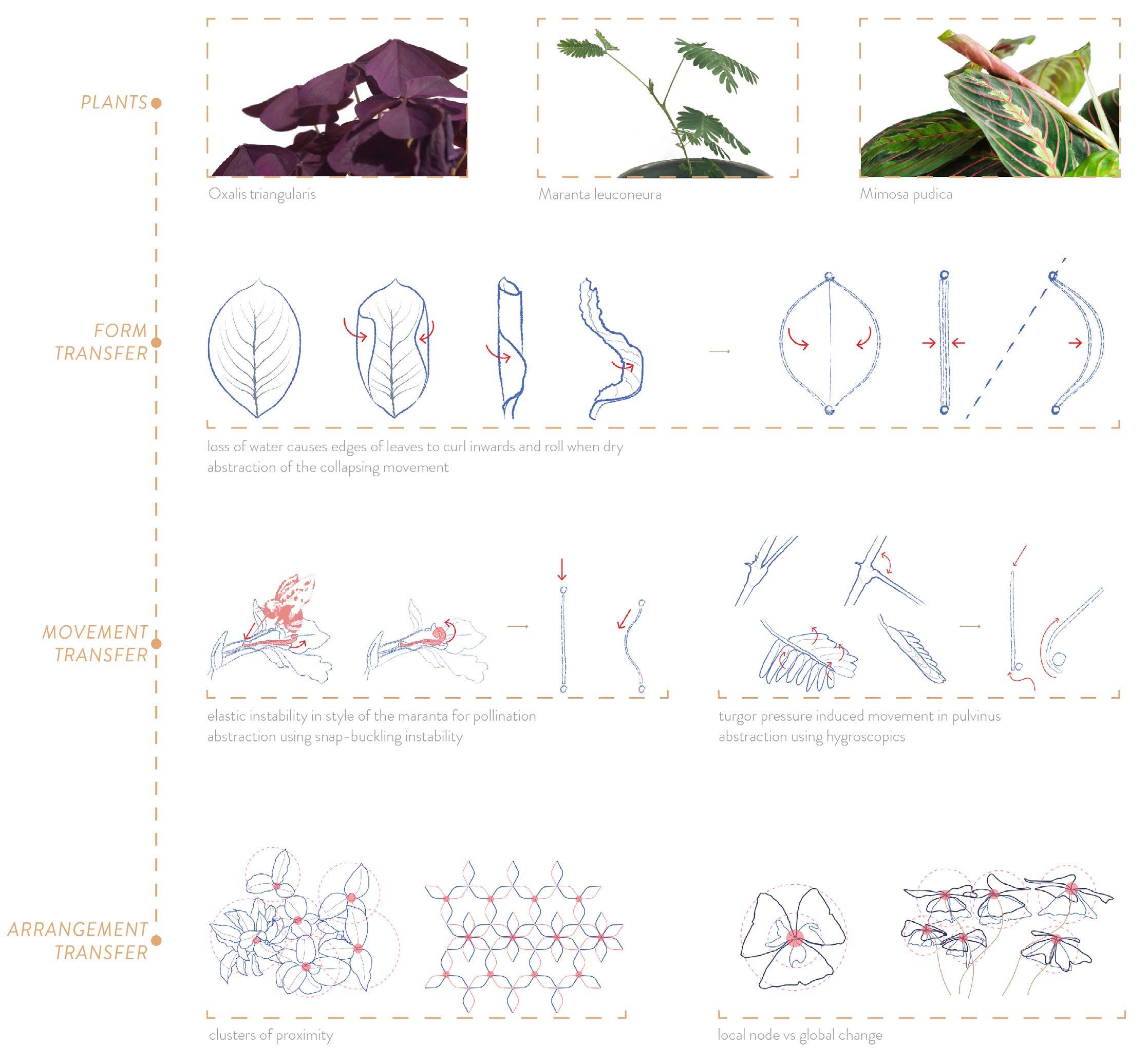
Prototyping: How can we utilize material-based actuation strategies in architectural applications?

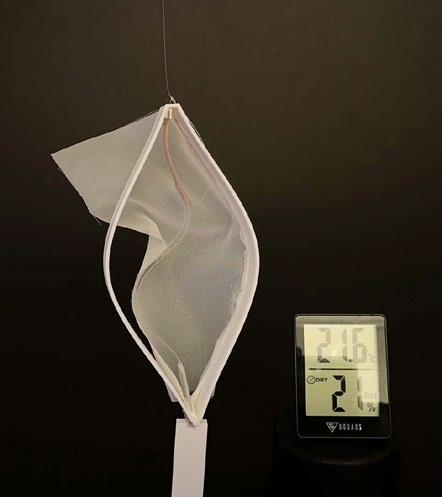

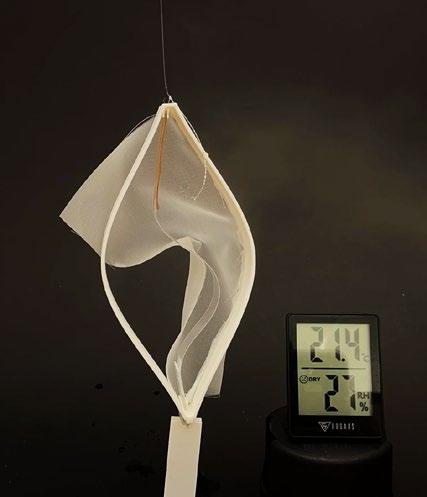

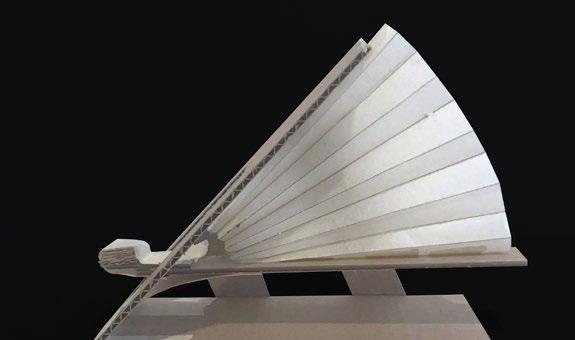

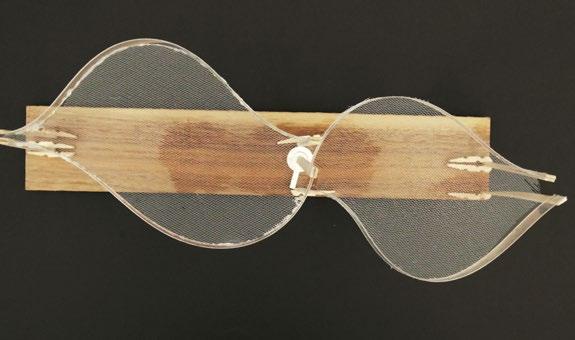




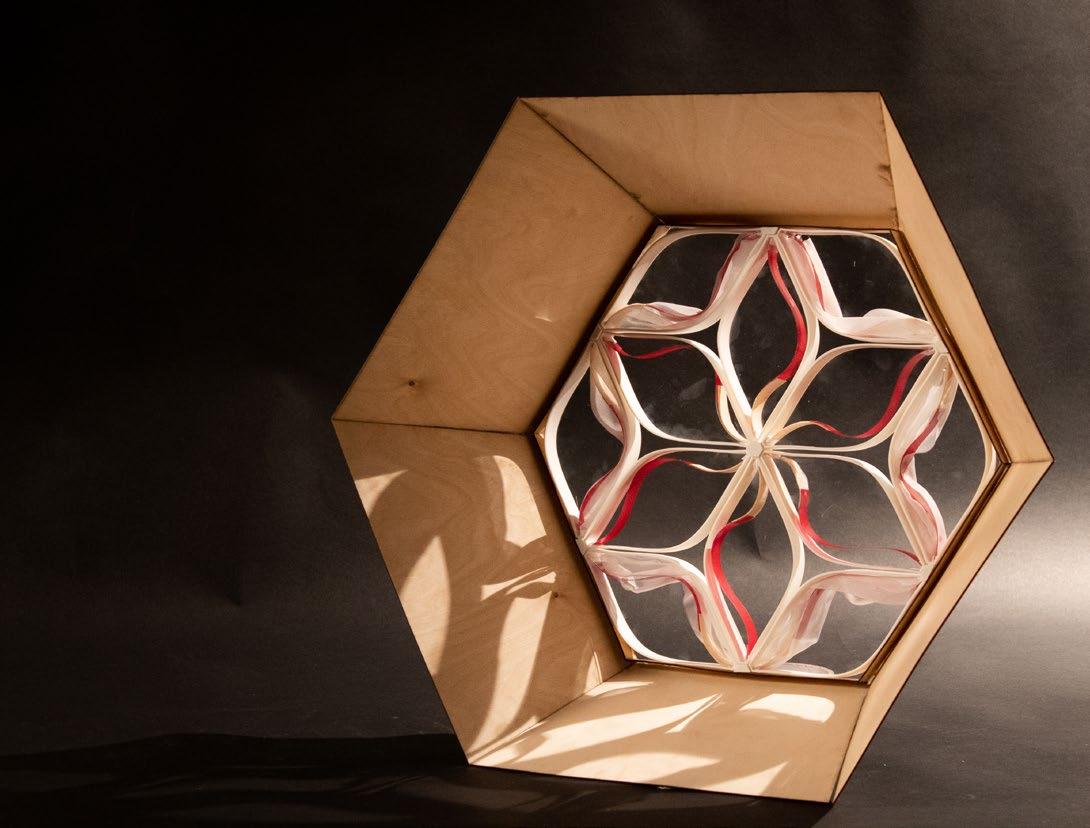

Taking inspiration from the arrangement of leaf clusters from the maranta and its centroid, the single unit is aggregated to form a hexagonal opening with an outer and an inner ring. By manipulating the hygroscopic to flexible material ratio, we can control the RH at which the snapping occurs in the leaflets in the outer ring versus the inner, creating an aperture effect. There are three main states for the aperture: an open, semi-open, and a closed module that allow for the filtration of light.


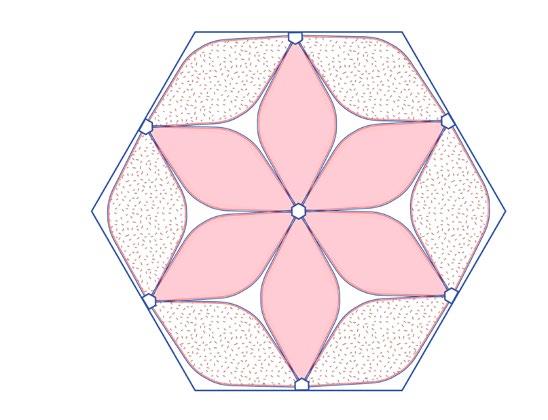

There is an abundance of cedar trees, notable for their durability and fragrant aroma which permeates this site.
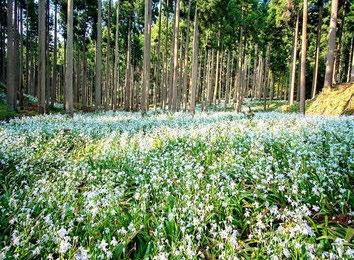
The paperbushes bloom once a year and are very fragile so one would want to protect them: a nice balance between shade and sunlight.
A delicate flower growing on the ground: one would raise the ground plane to avoid disturbance.

Adaptive strategies can play a key role in adaptive façades. As the threshold between interior and exterior conditions, the skin of a structure plays an important role in not only regulating but establishing the ambiance and atmosphere of inhabited spaces. The negotiation of this relationship for the comfort of inhabitants continues to be developed and motivated by desires to limit energy expenditure in these control systems.

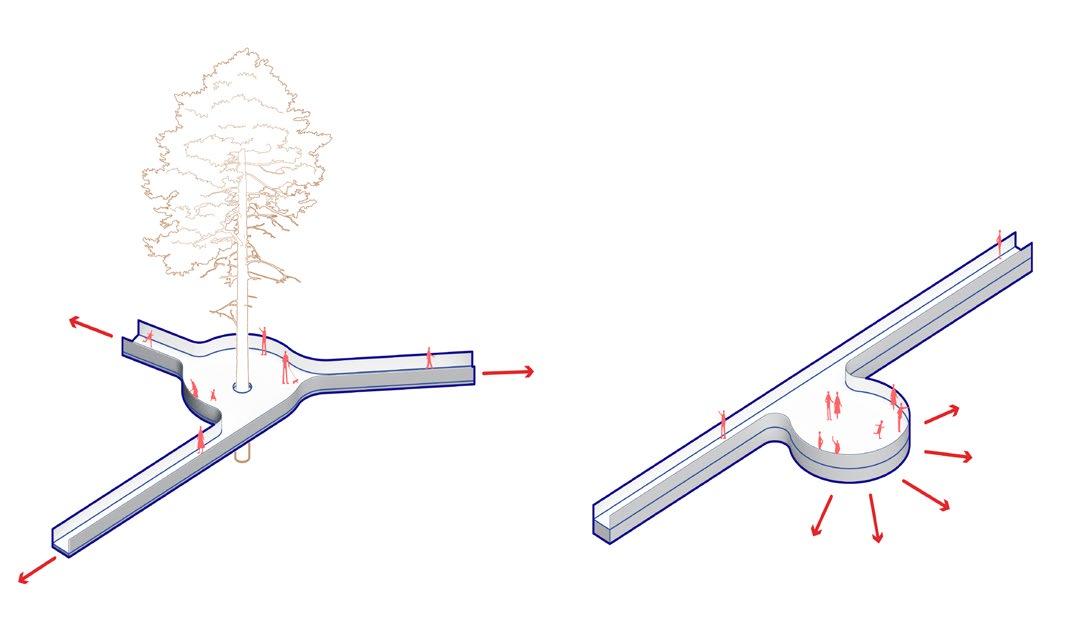
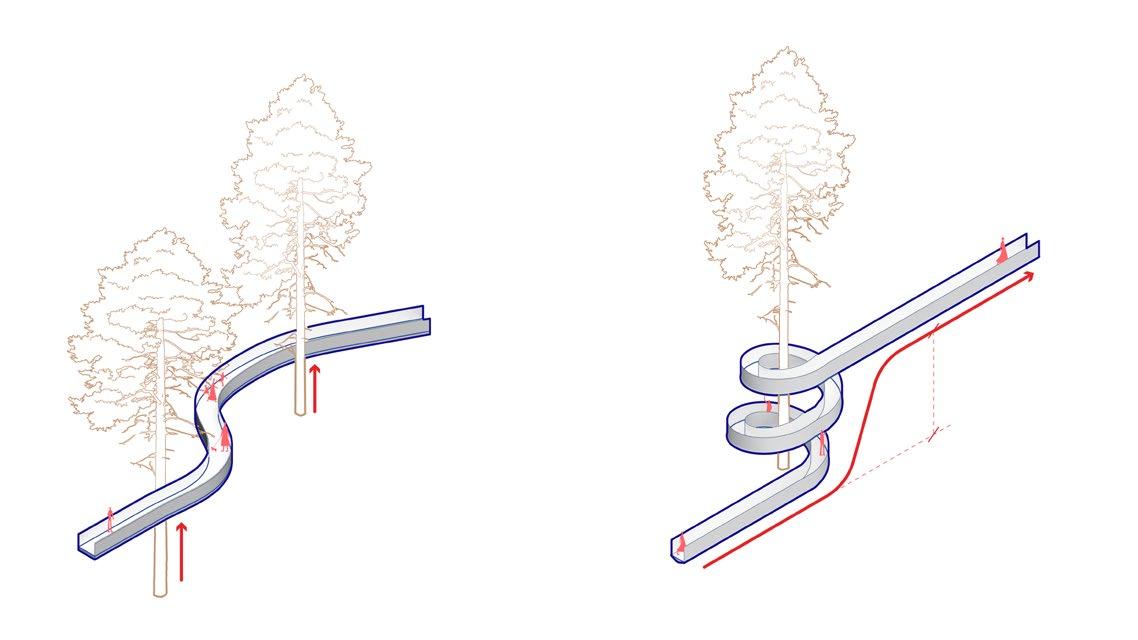
Applying the cassettes to a wall provides light modulation and spatial depth. The aperture serves as a climateresponsive shading device and as a portal framing the exterior view. Each shelter tests a different level of enclosure while negotiating the user‘s experience with relation to their surroundings.

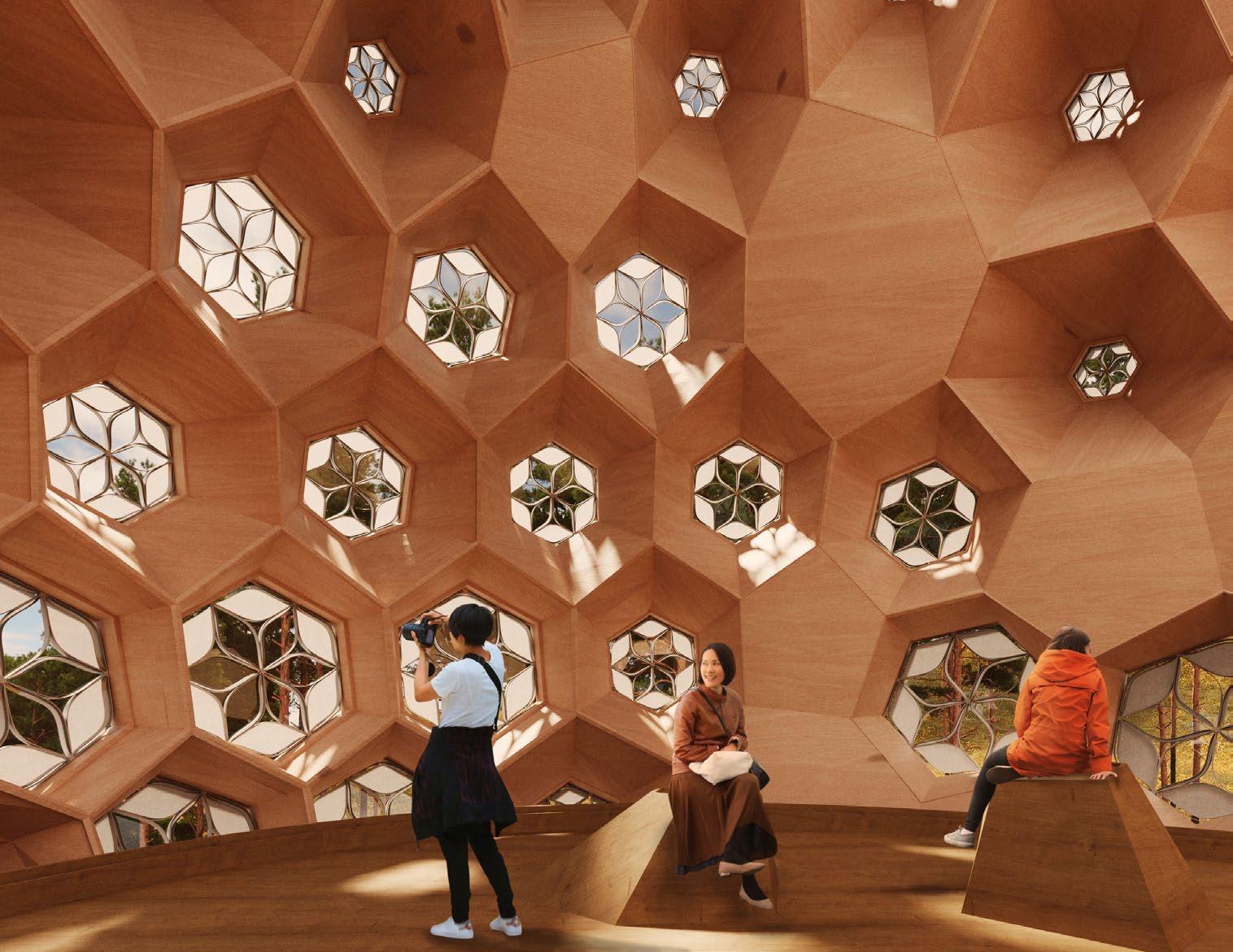


Nine variations of the modulated unit are developed in this façade scheme, with openings of 0.5m, 1.0m, and 1.5m in diameter, each with varying options in terms of cassette depth, ranging from 0.5m, 0.7m, and 1.0m.


These subtle changes create significant impacts on the amount of light in the space, how shadows are cast, and what can be seen beyond in the user’s line of sight. Taking into consideration each variation of the cassette module, larger openings are placed at eye level, while smaller apertures are positioned higher in the structure. Working with the cassette geometry, the apertures act as light funnels, casting sharp shadows in the space while accentuating the cassette geometry. The humidity calibration of the aperture openings would be designed to produce a dynamic choreography throughout the day.


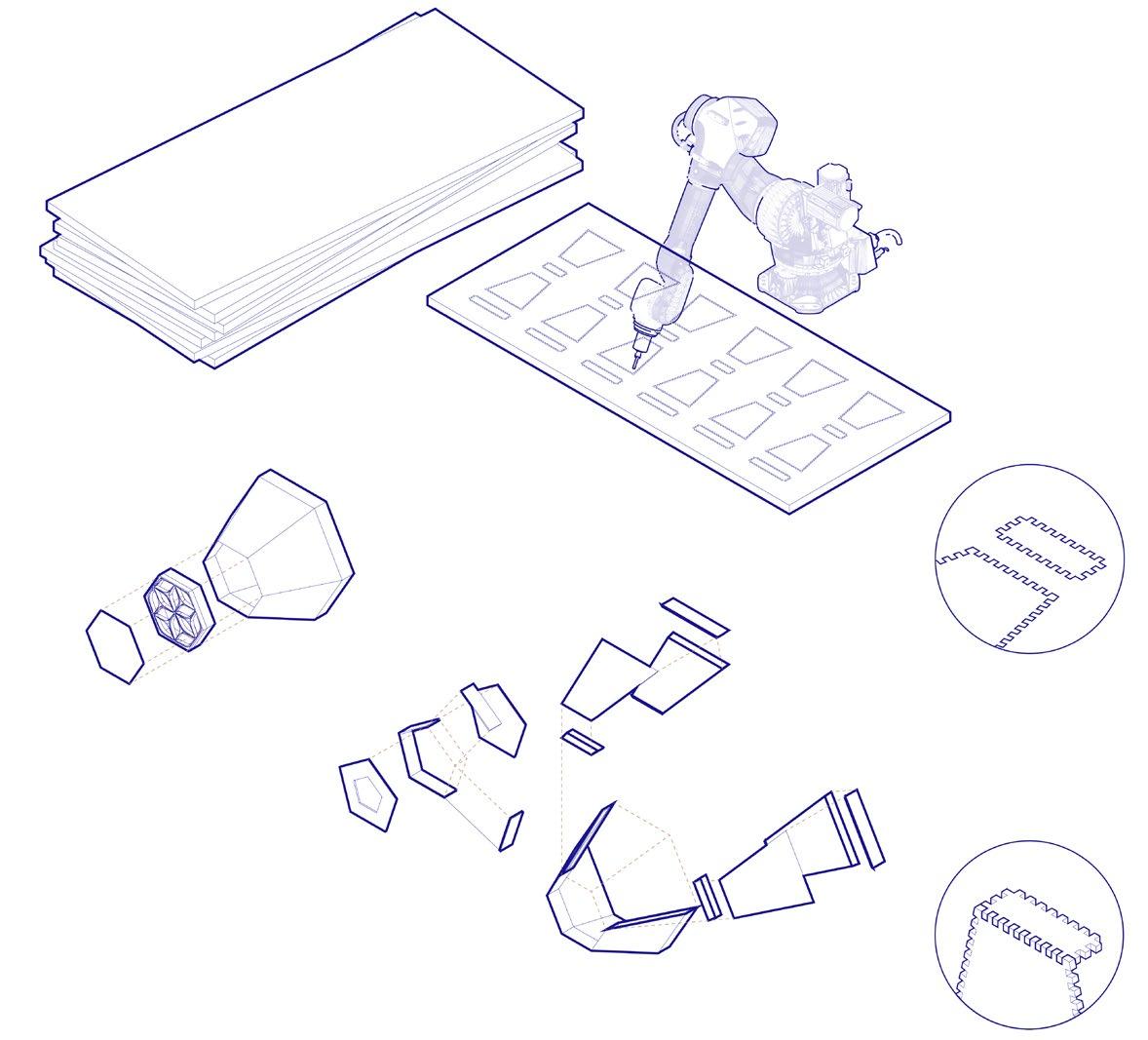
Site Sections
ASSEMBLY AXONOMETRIC


